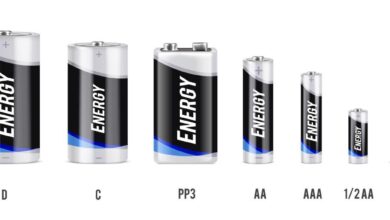Leveraging PLCs for Real-Time Process Monitoring and Control

Programmable Logic Controllers (PLCs) are essential in modern industrial automation, particularly in real-time process monitoring and control. These systems offer industries like manufacturing, energy, and pharmaceuticals the ability to operate efficiently, minimize downtime, and optimize productivity. As technology evolves, the role of PLCs is expanding, incorporating advanced power meters such as the METSEPM5563RD – PowerLogic PM5563, and reliable sources like PLCHMI for acquiring automation solutions. This article delves into the applications of PLCs in real-time monitoring and control, their key benefits, and emerging trends.
Understanding PLCs in Real-Time Monitoring and Control
A PLC is a specialized computer designed for industrial applications. It is used to automate electromechanical processes such as machinery control, factory assembly lines, and building systems. Real-time monitoring and control refer to the PLC’s ability to gather and process data from sensors, analyze the information, and make control decisions within a very short time frame. This ensures that machines and processes function smoothly and efficiently.
PLCs communicate with various input devices, such as sensors and switches, which send data about the current state of the system. The PLC then processes this data according to its pre-programmed instructions and sends signals to output devices like actuators, motors, or valves to adjust the system’s operation as needed.
Key Components of a PLC System for Real-Time Monitoring and Control
- Input/Output (I/O) Modules: These modules connect the PLC to field devices like sensors, switches, and actuators. Input modules collect data, while output modules send commands to control devices.
- Central Processing Unit (CPU): The CPU is the brain of the PLC. It processes input data, runs the control logic programmed by the operator, and makes decisions on how to respond.
- Communication Interfaces: These enable the PLC to connect with other systems, including SCADA (Supervisory Control and Data Acquisition) systems or Human-Machine Interfaces (HMIs), which provide an interface for operators to interact with the system in real time.
- Power Supply: Ensures that the PLC and all connected devices receive a stable power source.
Benefits of Using PLCs for Real-Time Monitoring and Control
1. Improved Efficiency
Real-time monitoring allows PLCs to detect and respond to changes in the process immediately. For example, if a sensor detects an issue such as overheating or an unexpected pressure rise, the PLC can quickly take corrective action by shutting down the equipment or adjusting parameters. This instant response leads to better efficiency and helps prevent costly breakdowns.
2. Increased Reliability
PLCs are built for industrial environments and are highly reliable. Their robust design ensures that they can withstand harsh conditions such as extreme temperatures, vibrations, and electrical noise, providing consistent performance for real-time monitoring and control.
3. Data Collection and Analysis
PLCs collect vast amounts of data from field devices, providing a wealth of information about system performance. This data can be used for process optimization, predictive maintenance, and troubleshooting. By analyzing trends and historical data, operators can make informed decisions to improve system efficiency and minimize downtime.
4. Flexibility and Scalability
Modern PLCs are highly adaptable. They can be reprogrammed and reconfigured as needed to meet changing production requirements or integrate new technologies. Additionally, many PLC systems are modular, allowing them to scale as the needs of the operation grow.
5. Reduced Downtime
With real-time monitoring, PLCs can identify potential issues before they escalate into full-blown problems. For example, if a motor begins to overheat, the PLC can initiate a cooling cycle or shut it down to prevent damage, reducing the risk of unplanned downtime.
Applications of PLCs in Real-Time Monitoring and Control
PLCs are used in a wide range of industries for real-time process control and monitoring. Some of the most common applications include:
1. Manufacturing and Assembly Lines
In manufacturing, PLCs control everything from conveyor belts and robotic arms to automated inspection systems. Real-time monitoring ensures that production lines operate at optimal speeds and efficiency, detecting any faults that could impact quality or slow down production.
2. Water Treatment Plants
PLCs control various processes in water treatment plants, such as filtration, chlorination, and water distribution. Sensors provide real-time data about water quality, flow rates, and pressure, enabling precise control of treatment processes to meet regulatory standards.
3. Power Generation and Distribution
In power plants, PLCs monitor and control turbines, boilers, and generators. They collect real-time data on temperature, pressure, and load distribution, adjusting control parameters to optimize energy production and reduce waste.
4. Food and Beverage Processing
In the food industry, PLCs ensure that processing equipment maintains the correct temperature, pressure, and other parameters. For example, they monitor pasteurization processes in real time, ensuring food safety standards are met without sacrificing production efficiency.
5. Pharmaceutical Manufacturing
PLCs are critical in pharmaceutical production, where precise control of mixing, heating, and cooling is necessary. Real-time monitoring ensures that drug formulations meet strict regulatory standards while maximizing production output.
Future Trends in PLC Technology for Real-Time Monitoring
As industries evolve, so too do PLC technologies. Several emerging trends are enhancing the capabilities of PLCs for real-time monitoring and control:
1. Integration with IoT and Edge Computing
The Internet of Things (IoT) is transforming industrial automation by connecting PLCs with sensors, actuators, and other devices across an entire facility. Edge computing allows data to be processed locally by the PLC rather than sending it to a remote cloud, reducing latency and improving the speed of decision-making.
2. AI and Machine Learning Integration
Artificial intelligence (AI) and machine learning can enhance real-time monitoring by allowing PLCs to learn from historical data and make predictive decisions. This is particularly useful in predictive maintenance, where AI can predict equipment failures before they occur, reducing downtime.
3. Enhanced Cybersecurity
As PLCs become more connected through IoT and industrial networks, cybersecurity is becoming a priority. PLC manufacturers are incorporating advanced encryption, secure communication protocols, and other measures to protect against cyberattacks.
4. Increased Use of Wireless Communication
Wireless communication between PLCs and field devices is becoming more prevalent, offering greater flexibility in system design. Wireless sensors and actuators reduce installation costs and enable more dynamic process control.
Conclusion
Leveraging PLCs for real-time process monitoring and control offers industries significant advantages, from increased efficiency to reduced downtime. By integrating power monitoring systems like the METSEPM5563RD – PowerLogic PM5563, industries can gain real-time insights into energy consumption, optimize processes, and enhance productivity. With future trends like IoT integration, AI, and wireless communication shaping the industry, PLCs will continue to play a critical role in driving innovation in industrial automation.
For those looking to source reliable PLCs and related equipment, trusted suppliers like PLCHMI provide access to a wide range of automation products, ensuring that companies can stay competitive and efficient in an ever-evolving industrial landscape.





